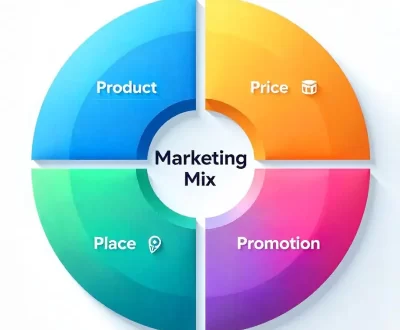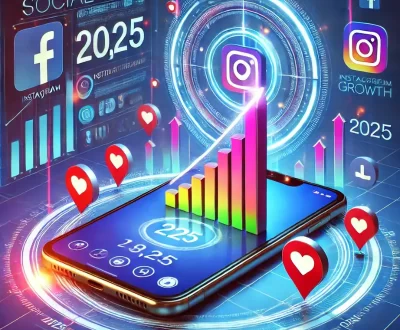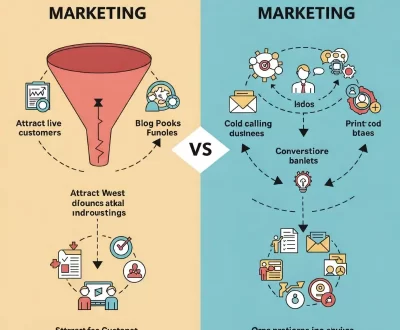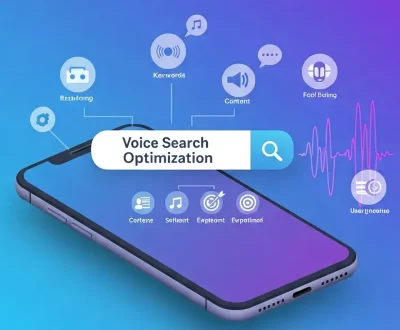How Digital Marketing helps to grow your Business in 2025: A Complete Guide
- March 7, 2025
- Uncategorized
In today’s hyper-connected world, digital marketing has become the lifeblood of business growth. As we move through 2025, the digital landscape continues to evolve at breakneck speed, offering both exciting opportunities and new challenges for businesses of all sizes. This comprehensive guide will walk you through exactly how digital marketing can transform your business this year, with detailed explanations and actionable strategies you can implement immediately.
Why Digital Marketing is Non-Negotiable in 2025
Before diving into strategies, let’s understand why digital marketing is more crucial than ever:
- Consumer Behavior Has Shifted Permanently
- 87% of shoppers now begin product searches online (Google Data, 2024)
- The average consumer interacts with 11 digital touchpoints before making a purchase
- The Competitive Landscape Has Changed
- Small businesses with strong digital presences are outperforming larger competitors who are slow to adapt
- Digital channels provide cost-effective ways to compete with industry giants
- Marketing ROI is More Measurable Than Ever
- Advanced analytics allow you to track every dollar spent to actual revenue generated
- Digital campaigns can be optimized in real-time based on performance data
Now, let’s explore the seven key strategies that will drive your business growth in 2025:
1. Defining Your Digital Marketing Foundation
The Importance of Clear Goals
Without specific objectives, your digital marketing efforts will lack direction and measurable outcomes. Effective goals should follow the SMART framework:
- Specific: “Increase website traffic” is vague. “Increase organic website traffic by 30%” is specific.
- Measurable: Use quantifiable metrics like percentage increases or absolute numbers.
- Achievable: Set ambitious but realistic targets based on your resources.
- Relevant: Ensure goals align with overall business objectives.
- Time-bound: Establish clear deadlines for achievement.
Understanding Your Audience
Creating detailed buyer personas goes beyond basic demographics. Consider:
- Psychographics: Values, interests, and lifestyle
- Online Behavior: Preferred platforms, content consumption habits
- Pain Points: Specific challenges your product/service solves
- Buying Journey: How they research and make purchasing decisions
Actionable Tip: Conduct customer surveys or interviews to gather authentic insights about your audience’s needs and preferences.
2. Website Optimization: Your Digital Storefront
Why Website Performance Matters
Your website is often the first impression potential customers have of your business. Key optimization areas include:
Technical SEO:
- Mobile responsiveness (Google now uses mobile-first indexing)
- Page load speed (each second of delay can reduce conversions by 7%)
- Secure HTTPS protocol
- Proper URL structure
User Experience (UX):
- Intuitive navigation (visitors should find what they need in 3 clicks or less)
- Clear visual hierarchy
- Readable typography (16px minimum for body text)
- Strategic white space
Conversion Elements:
- Above-the-fold CTAs
- Trust signals (testimonials, security badges)
- Minimal form fields
- Visible contact information
Advanced Tip: Implement heat mapping tools like Hotjar to see how visitors interact with your site and identify friction points.
3. Search Engine Optimization: The Long-Term Growth Engine
Keyword Strategy Evolution
Modern SEO requires a nuanced approach to keyword research:
- Search Intent Matching: Classify keywords as informational, navigational, commercial, or transactional
- Semantic Search Optimization: Google now understands context, so focus on topic clusters rather than individual keywords
- Voice Search Optimization: 55% of searches are now voice-based (Comscore, 2024), requiring natural language targeting
Content That Ranks
High-quality content must be:
- Comprehensive: Cover topics in-depth (2,000+ words for competitive terms)
- Authoritative: Cite credible sources and demonstrate expertise
- Engaging: Use multimedia elements and interactive features
- Fresh: Update content regularly to maintain rankings
Pro Tip: Create “10x Content” – material that’s ten times better than anything currently ranking for your target terms.
4. Social Media Marketing: Building Authentic Connections
Platform-Specific Strategies
Each social platform serves different purposes:
LinkedIn (B2B Focus):
- Publish long-form industry insights
- Join and participate in relevant groups
- Leverage LinkedIn Articles for thought leadership
Instagram (Visual Storytelling):
- Utilize Reels for maximum reach
- Implement a consistent aesthetic
- Leverage user-generated content
TikTok (Viral Potential):
- Jump on trending sounds/challenges
- Show behind-the-scenes content
- Educate through short, engaging videos
Community Building Tactics
- Respond to all comments and messages promptly
- Create branded hashtags to encourage UGC
- Host live Q&A sessions
- Run polls and ask for feedback
Advanced Strategy: Develop a “content ecosystem” where each platform’s content complements and drives traffic to others.
5. Paid Advertising: Precision-Targeted Growth
Platform Selection Guide
Choose platforms based on your goals:
| Platform | Best For | Avg. CPC |
|---|---|---|
| Google Ads | High-intent buyers | $2.69 |
| Facebook Ads | Brand awareness | $0.97 |
| LinkedIn Ads | B2B leads | $5.26 |
| TikTok Ads | Younger demographics | $1.00 |
Ad Optimization Techniques
- A/B Testing: Run multiple ad variations simultaneously
- Retargeting: Remarket to website visitors
- Lookalike Audiences: Target users similar to your best customers
- Ad Scheduling: Run ads during peak engagement times
Budget Tip: Allocate 70% of budget to proven performers and 30% to testing new approaches.
6. Email Marketing: The High-ROI Workhorse
List Building Strategies
- Content upgrades (free resources in exchange for emails)
- Exit-intent popups
- Referral incentives
- In-person collection at events
Automation Sequences That Convert
- Welcome Series (3-5 emails)
- Abandoned Cart (3 emails over 5 days)
- Post-Purchase (Nurture to repeat business)
- Re-engagement (Win back inactive subscribers)
Copywriting Tip: Use the PAS formula (Problem-Agitate-Solution) for higher conversions.
7. Analytics and Continuous Improvement
Key Metrics to Track
- Acquisition: Where your traffic comes from
- Behavior: How users interact with your site
- Conversions: Goals completed
- Revenue: ROI by channel
Optimization Framework
- Analyze current performance
- Identify underperforming areas
- Develop hypotheses for improvement
- Test changes
- Implement winning variations
Pro Tip: Create a monthly “growth report” to track progress and adjust strategies.
Implementing Your 2025 Digital Marketing Strategy
To put this all into action:
- Audit Your Current Presence – Identify strengths and weaknesses
- Prioritize Initiatives – Focus on 2-3 high-impact areas first
- Create a Content Calendar – Plan and schedule content in advance
- Allocate Resources – Budget, tools, and personnel needed
- Establish KPIs – How you’ll measure success
- Review Monthly – Adjust based on performance data
Remember: Digital marketing success comes from consistent execution over time. Start implementing these strategies today, and you’ll be positioned for exceptional growth throughout 2025 and beyond.








